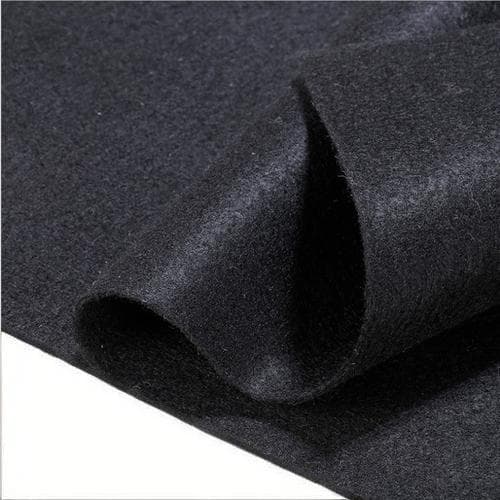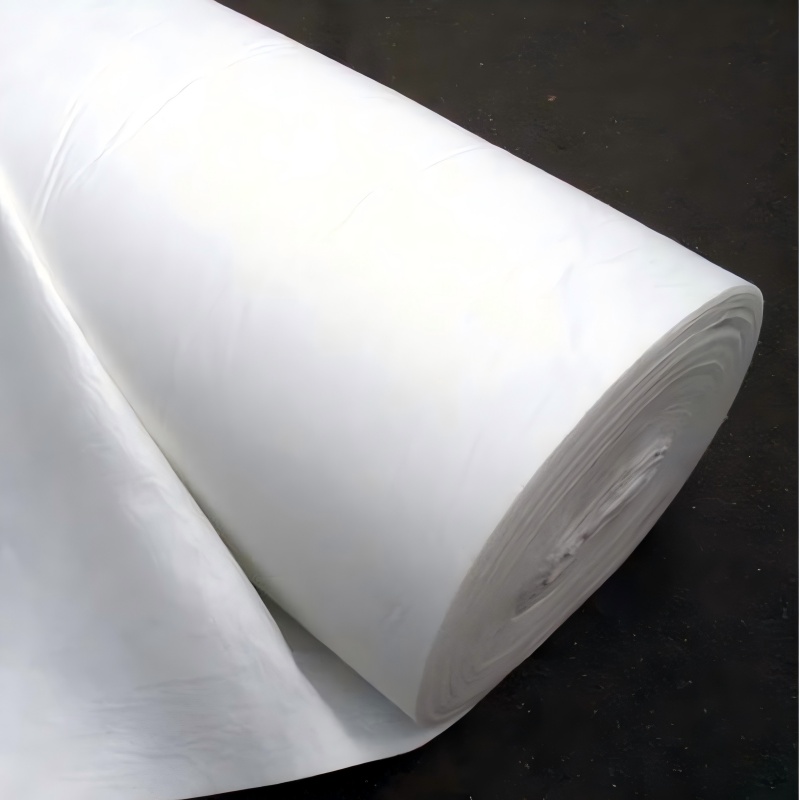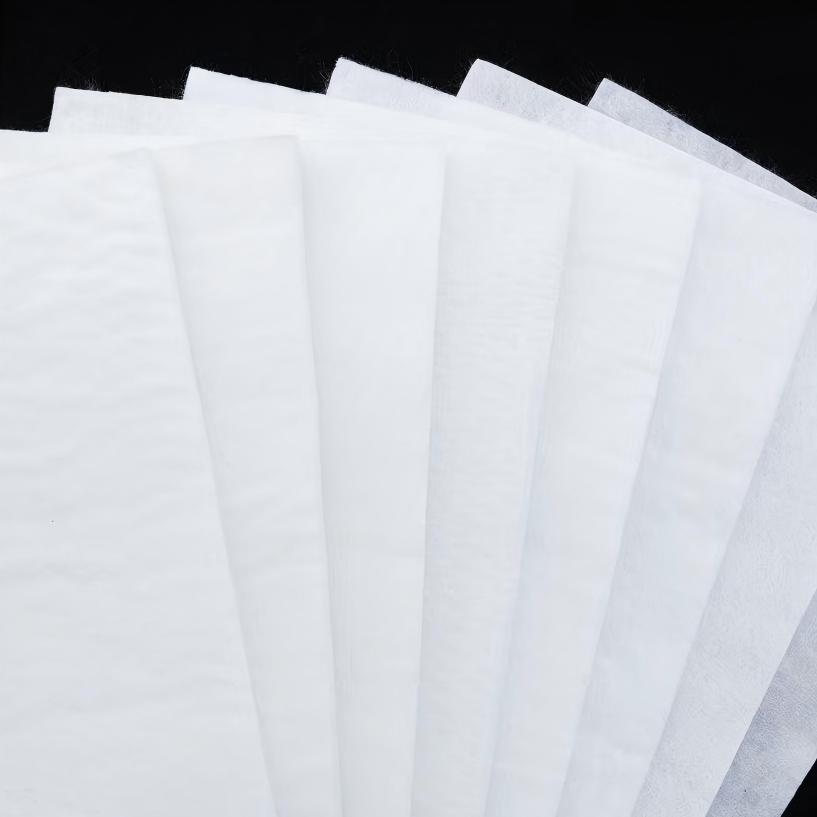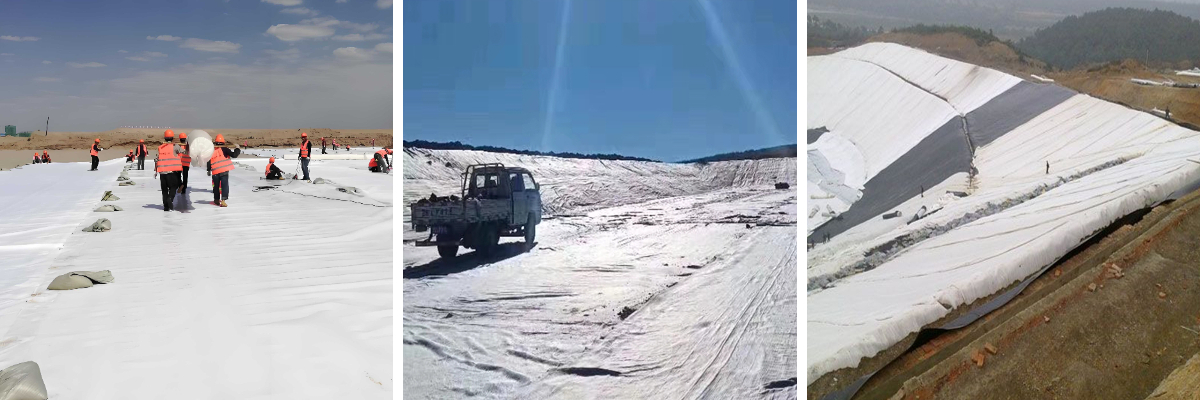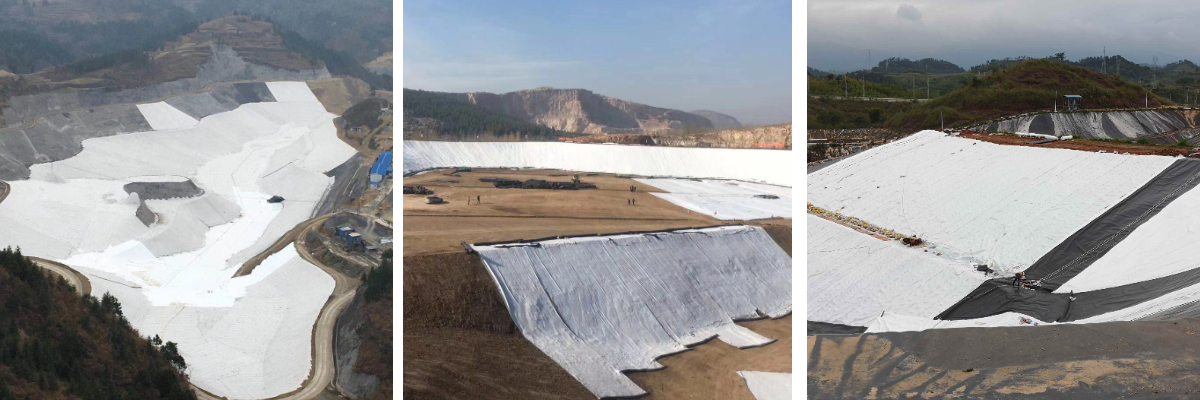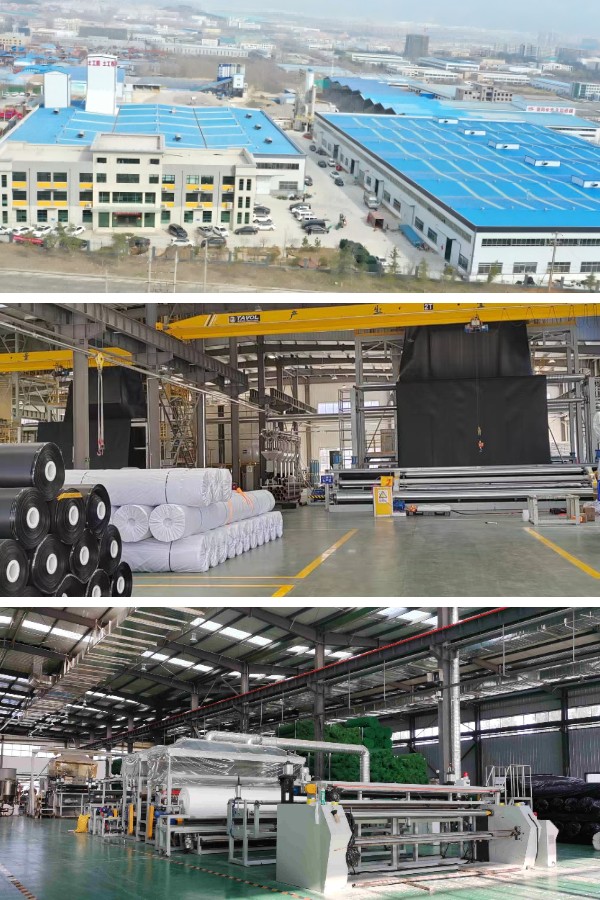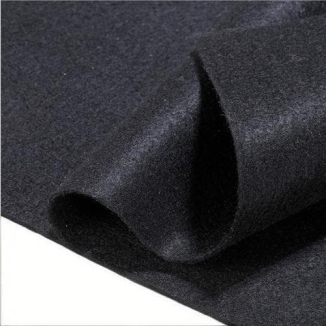Non Woven Geotextiel Gronddoek
1. Efficient filtration and drainage: The three-dimensional porous structure quickly guides water, intercepts fine soil to prevent blockage, and ensures smooth soil drainage
2. Stabilize the soil: enhance the overall integrity of the soil, reduce settlement deformation, and prevent slope and roadbed loss
3. Weather resistance and corrosion resistance: UV resistance, acid and alkali resistance, stable performance for many years of outdoor use, long service life
4. Easy to lay economy: easy to cut quality, suitable for complex terrain, convenient construction, controllable cost
Products Introduction:
Non Woven Geotextiel Gronddoek is a type of functional geotextile made from high molecular weight fibers such as polypropylene (PP) and polyester (PET) through non-woven processes such as needle punching, thermal bonding, or spunbonding. Its core positioning is "the basic barrier for soil protection and environmental adaptation". With a three-dimensional porous structure formed by random interweaving, it can achieve four core functions of "filtration, drainage, isolation, and protection". It is widely used in soil stability, water conservancy protection, horticultural planting and other scenarios, providing physical protection for the soil layer while also considering ecological compatibility. It is a "low-cost, high-efficiency" soil management material in modern civil engineering and agricultural horticulture.
Product Features:
1. Three dimensional filtration and drainage, soil protection and ventilation
The fibers are randomly interwoven to form a uniform porous structure (pore size 0.05-0.3mm, porosity 60% -80%), which has a dual function of "filtration" and "drainage": on the one hand, it can intercept fine particles in the soil (retention rate ≥ 95%), preventing them from flowing away with water and causing damage to the soil structure; On the other hand, the pores are interconnected with a permeability coefficient of ≥ 1 × 10 ⁻ cm/s, which can quickly divert rainwater, groundwater or soil seepage, avoid water accumulation and soften the soil, and adapt to soil protection, water conservancy slopes and other scenarios in rainy areas.
2. Flexible and snug fit, suitable for complex terrains
The texture is soft and has excellent ductility (fracture elongation rate of 15% -50%), which can naturally fit the undulating soil surface, slope corners or irregular planting areas, without blind spots for laying - whether it is the curved edge of the courtyard flower bed or the inclined surface of the river bank slope, it can tightly cover the soil, solving the pain points of traditional rigid protective materials (such as plastic boards, concrete) that are difficult to bend and easy to crack. At the same time, the product is lightweight (50-400g/m ²), with a single square meter weight of only 0.05-0.4kg, making it easy to handle and cut without the need for professional equipment for manual operation.
3. Weather resistant and corrosion-resistant, long-lasting and durable
The raw materials have been optimized through a triple process of UV stabilization, acid and alkali resistance, and biodegradation resistance, and can be used stably in extreme environments ranging from -30 ℃ to 70 ℃. They do not age or crack when exposed to outdoor sunlight, do not corrode when in contact with saline alkali soil or groundwater, and can maintain structural integrity even in the face of microbial decomposition. The service life can reach 5-10 years in ordinary soil environments, and it can also maintain stable performance for 3-5 years in complex scenarios such as water conservancy and slopes, reducing the manpower and cost investment of frequent replacement.
4. Ecological compatibility, safe and harmless
Produced using non-toxic and odorless polymer materials, the production process has no harmful emissions. When directly in contact with soil, plant roots, or groundwater after laying, it does not release pollutants, does not affect plant growth and soil microbial activity, and is suitable for high environmental protection scenarios such as home gardening, organic planting, and ecological slopes. Some models can also be made into biodegradable versions, which can naturally decompose into harmless substances after the end of their service life, avoiding secondary soil pollution and meeting the needs of ecological sustainability.
5. Economically efficient and adaptable to multiple scenarios
The production process is simplified, the utilization rate of raw materials is high, and the unit price is only 60% -80% of that of woven geotextiles, with significant cost advantages; No heavy machinery is required during construction, and manual overlap (overlap width ≥ 10cm) can be used to complete the laying. The construction efficiency is 2-3 times higher than traditional sand and gravel filter layers. At the same time, the product specifications are flexible (width 1-6m, length can be customized), which can meet the needs of small area coverage in home gardening (such as balcony flower pots, courtyard flower beds), as well as large-scale use in small and medium-sized projects (such as rural road embankments and small river protection), with a wide range of adaptability.
Product Parameters:
project | metric | ||||||||||
Nominal strength/(kN/m) | |||||||||||
6 | 9 | 12 | 18 | 24 | 30 | 36 | 48 | 54 | |||
1 | Longitudinal and transverse tensile strength / (kN/m) ≥ | 6 | 9 | 12 | 18 | 24 | 30 | 36 | 48 | 54 | |
2 | Maximum elongation at maximum load in longitudinal and transverse directions/% | 30~80 | |||||||||
3 | CBR top penetration strength /kN ≥ | 0.9 | 1.6 | 1.9 | 2.9 | 3.9 | 5.3 | 6.4 | 7.9 | 8.5 | |
4 | Longitudinal and transverse tearing strength /kN | 0.15 | 0.22 | 0.29 | 0.43 | 0.57 | 0.71 | 0.83 | 1.1 | 1.25 | |
5 | Equivalent aperture O.90(O95)/mm | 0.05~0.30 | |||||||||
6 | Vertical permeability coefficient/(cm/s) | K× (10-¹~10-), where K=1.0~9.9 | |||||||||
7 | Width deviation rate /% ≥ | -0.5 | |||||||||
8 | Unit area mass deviation rate /% ≥ | -5 | |||||||||
9 | Thickness deviation rate /% ≥ | -10 | |||||||||
10 | Thickness coefficient of variation (CV)/% ≤ | 10 | |||||||||
11 | Dynamic perforation | Puncture hole diameter/mm ≤ | 37 | 33 | 27 | 20 | 17 | 14 | 11 | 9 | 7 |
12 | Longitudinal and transverse fracture strength (grab method)/kN ≥ | 0.3 | 0.5 | 0.7 | 1.1 | 1.4 | 1.9 | 2.4 | 3 | 3.5 | |
13 | Ultraviolet resistance (Xenon arc lamp method) | Longitudinal and transverse strength retention rate% ≥ | 70 | ||||||||
14 | Ultraviolet resistance (fluorescence UV lamp method) | Longitudinal and transverse strength retention rate% ≥ | 80 | ||||||||
Product Applications:
1. Horticulture and Agricultural Planting Scenarios
Home gardening coverage: After cutting, it is laid on the soil surface of flower pots and flower beds, or covered on the surface of vegetable planting areas, which can intercept soil particles, prevent soil splashing during watering, and inhibit weed growth (shading rate ≥ 85%), reducing weed control workload; The breathable and permeable characteristics do not affect soil respiration and plant root water absorption, making it suitable for scenarios such as balcony vegetable planting and courtyard flower planting.
Protection of farmland and orchards: Laying in the rows and ridges of orchards can reduce the erosion of soil by rainwater and prevent soil erosion; Simultaneously regulating soil temperature (cooling in summer and keeping warm in winter), maintaining stable soil moisture, improving crop survival rate, and adapting to economic crop planting areas such as strawberry orchards and vineyards.
2. Civil Engineering and Soil Stability Scenarios
Road and roadbed protection: It is laid between the roadbed and gravel cushion layer of rural roads and community sidewalks, isolating soil and gravel, preventing soil particles from blocking gravel pores, and diverting roadbed water to avoid pavement cracking and depression caused by roadbed softening. It is suitable for the construction and maintenance of low-grade roads.
Slope and riverbank protection: Covering the soil surface of mountain slopes and river bank slopes, or laying under ecological gabions, it can intercept soil particles, resist rainwater erosion and water flow erosion, prevent slope collapse and riverbank soil erosion; Combined with vegetation planting, it can achieve a dual effect of "protection+ecological restoration", suitable for the management of small and medium-sized slopes and rural rivers.
3. Water conservancy and drainage scenarios
Small scale hydraulic filtration and drainage: used for covering the inner walls of household courtyard drainage ditches and farmland irrigation channels, or wrapping around seepage pipes, to filter sediment in water flow and prevent blockage of drainage systems; At the same time, it protects the soil on the inner wall of the ditch from being washed away by water flow, extends the service life of drainage facilities, and is suitable for courtyard drainage and farmland irrigation projects.
Pond and water feature protection: laid on the bottom soil surface of artificial ponds and landscape water pools, isolating soil and water bodies to prevent soil particles from mixing into water bodies and causing turbidity in water quality; Simultaneously allowing water infiltration, maintaining the ecological balance of the pond, and adapting to the construction of family courtyard water features and small landscape ponds.
4. Environmental Protection and Ecological Restoration Scenarios
Landfill auxiliary: Lay the anti-seepage membrane above the small landfill site (such as rural household waste landfill) as a filtration layer for leachate, intercepting solid impurities in the garbage and preventing damage to the anti-seepage membrane or blockage of drainage pipes; Simultaneously isolate garbage from surrounding soil to reduce the risk of pollutant dispersion.
Ecological slope restoration: In the ecological restoration of abandoned mining sites and road slopes, it is laid on the soil surface or sprayed under the substrate to fix the soil and prevent soil loss during the restoration process; Simultaneously providing a stable environment for plant seed germination, accelerating slope vegetation restoration, and adapting to small and medium-sized ecological restoration projects.
Non Woven Geotextiel Gronddoek (non-woven geotextile) has the core advantages of "efficient filtration and drainage, flexible adaptation, weather resistance and durability, and ecological economy", accurately solving the core pain points of "loss, waterlogging, and difficult maintenance" in soil management, while also considering cost and environmental protection needs. It is a "multi scenario adaptation material" that spans civil engineering, agricultural horticulture, and ecological restoration.
Compared to traditional soil protection solutions such as sand and gravel filter layers and plastic films, this product not only achieves the integration of filtration, drainage, and soil protection in terms of functionality, but also has more advantages in terms of convenience and cost control - it avoids the problems of cumbersome and high cost construction of sand and gravel layers, and solves the defects of plastic films being impermeable and prone to aging. Its widespread application not only promotes the development of soil management towards "lightweight and ecological", but also provides "low-cost, high cost-effectiveness" soil protection solutions for household users and small and medium-sized engineering parties. It is an indispensable basic material in modern soil protection and environmental governance.


